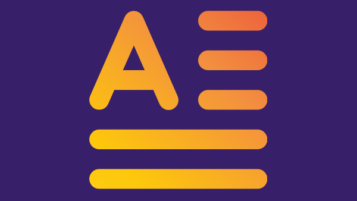Technical Writing
Qualified Translators a Must for Product Localization
Introduction Money paid to qualified technical writers and translators in a localization project is money spent very well indeed. Why? Because the worst thing for a project is to have the customers or end-users switch to another product since they either cannot understand the instructions and the way an interface works, or the localized copy…
Read MoreHow to Draw with Illustrator: SHAPES and ARROWS
© Ugur Akinci TOOL 3: Shapes and Arrows Click on the Shape Tool to display the various shape-drawing tools available: In the tool bar, the last-used tool is displayed. Tip: After selecting the tool, if you click on your canvas WITHOUT drawing anything, you’ll display the measurement dialog box. For example, here is the one…
Read MoreTechnical Writing – How to Structure FrameMaker Paragraphs While Using the Unstructured Interface
© Ugur Akinci Adobe FrameMaker comes with two powerful built-in interfaces: Structured and Unstructured. You can check out which interface you are using by selecting File > Preferences > General from the main menu and look at the Product Interface drop-down list. Most technical writers use FrameMaker (FM) in the default unstructured mode. That’s fine…
Read MoreHow to Draw with Illustrator: GUIDES
© Ugur Akinci TOOL 2: Guides You need to use guides to position objects correctly relative to one another and precisely on an Illustrator grid. SNAP ON guides are a delight to use since objects snap to them like iron fillings snap to a magnet. CREATE the Guides by first turning on your RULERS. Click…
Read MoreTechnical Writing – 7 Time-Tested Principles to Design a Cover For a Technical Document
© Ugur Akinci If you are a technical writer working for a company as a payroll employee, you might be working with corporate design guidelines that define what you can and cannot do to design the cover of your technical document. But what if you are a “lone writer,” an independent contractor working out of…
Read MoreHow to Draw with Illustrator: LAYERS
© Ugur Akinci Add the title “Technical Illustrator” to your job title in a hurry and earn more! Adobe Illustrator is a bottomless well in terms of its capabilities. But you can’t postpone drawing forever until you learn “everything” that Adobe Illustrator can do. You can take so many classes and read so many books.…
Read MoreHow to Create a New Paragraph Style in a FrameMaker Document
Introduction FrameMaker Paragraph style is a paragraph formatting style that you can apply to text in FrameMaker. There are four basic paragraph styles: Heading, Body, Footnote, and Header. The purpose of paragraph styles is to make it easier for you to format your text consistently by assigning a specific style to each type of text.…
Read MoreTechnical Writing – Advantages of Using Microsoft SourceSafe While Writing Your Technical Documents
© Ugur Akinci Just like with most things in life, control is an important aspect of technical documentation. Control is even more important if you are working in an office as a part of a writing team. First, you need to make sure that your files are not lost. That’s basic. And then you need…
Read MoreTechnical Writer Salaries in UNITED STATES
An interesting compilation of Technical Writer Salaries in UNITED STATES, with a graph Medical Writer Salaries in UNITED STATES Copy Writer Salaries in UNITED STATES
Read MoreTechnical Writing – 7 Top Web Writing Principles For Technical Writers
© Ugur Akinci Web writing is one of those assignments that technical writers do well due to their organized approach to technical information. But web writing differs from regular user guide and procedural writing in some important respects. Web is a fast place. People usually don’t have the time to go through long essays. Here…
Read More

